VU-VZ HSV Maloo: Buyers guide
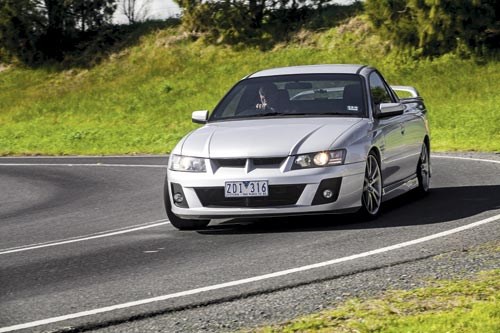 VU-VZ HSV Maloo
VU-VZ HSV Maloo

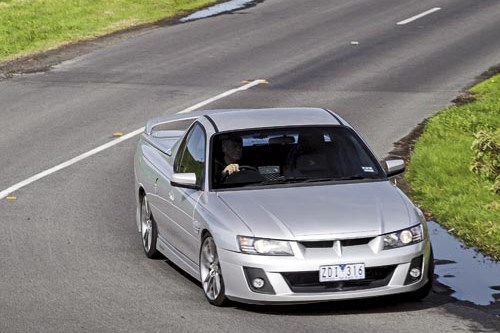 VU-VZ HSV Maloo
VU-VZ HSV Maloo

 VU-VZ HSV Maloo
VU-VZ HSV Maloo
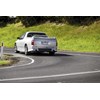
 VU-VZ HSV Maloo
VU-VZ HSV Maloo
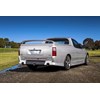
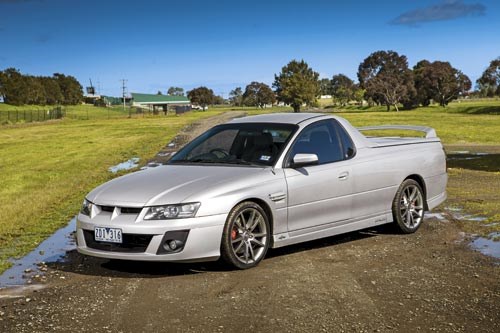 VU-VZ HSV Maloo
VU-VZ HSV Maloo

 VU-VZ HSV Maloo
VU-VZ HSV Maloo
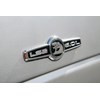
 VU-VZ HSV Maloo
VU-VZ HSV Maloo

 VU-VZ HSV Maloo
VU-VZ HSV Maloo

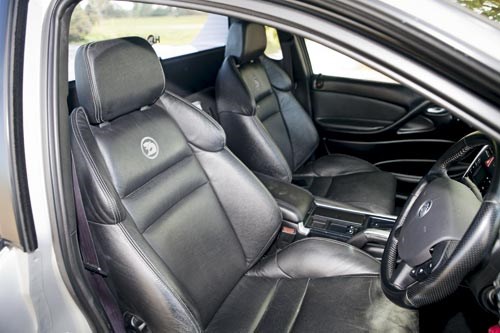 VU-VZ HSV Maloo
VU-VZ HSV Maloo

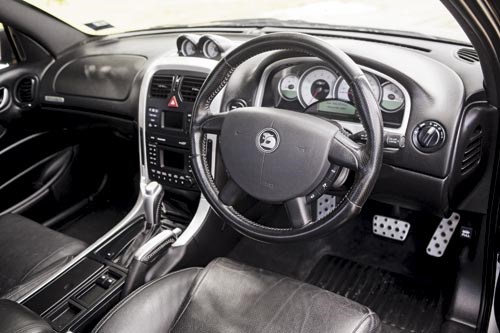 VU-VZ HSV Maloo
VU-VZ HSV Maloo

 VU-VZ HSV Maloo
VU-VZ HSV Maloo

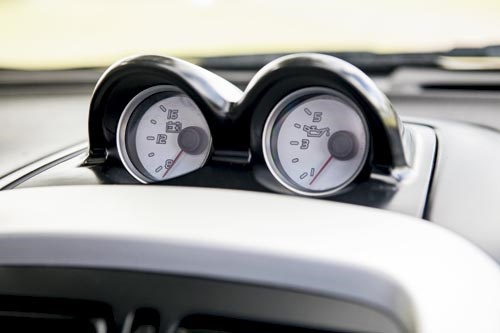 VU-VZ HSV Maloo
VU-VZ HSV Maloo


|
|
VU-VZ HSV Maloo
|

|
|
VU-VZ HSV Maloo
|

|
|
VU-VZ HSV Maloo
|

|
|
VU-VZ HSV Maloo
|

|
|
VU-VZ HSV Maloo
|

|
|
VU-VZ HSV Maloo
|

|
|
VU-VZ HSV Maloo
|

|
|
VU-VZ HSV Maloo
|

|
|
VU-VZ HSV Maloo
|

|
|
VU-VZ HSV Maloo
|

|
|
VU-VZ HSV Maloo
|

|
|
VU-VZ HSV Maloo
|
After a slow start, sales of HSV’s tray-back sports car took off, and they’ve become more than just a tradie’s tool...

|
|
Buyer's guide: VU-VZ HSV Maloo
|
From Unique Cars magazine #342, October 2012
VU-VZ Series HSV Maloo
Its name comes from an Aboriginal word for ‘thunder’ but early Maloos barely raised a rumble in the sales charts. People who wanted an HSV generally chose a sedan and those that needed a ute didn’t want something knee-deep in body-kitting and ‘steal me’ stickers.
Only 1000 Maloos were made during the first decade of its existence, but then came the rise of V8 ute racing and a cultural shift that made recreational commercial vehicles more desirable than at any time since the 1970s panel van era.
In March 2000, HSV ended its association with the long-serving Aussie 5.0-litre V8 engine. In common with the organisation’s passenger models, VU Maloo utilities packed 5.7-litre LS1 Chevrolet V8 engines with 255kW of power.
Also new was the first six-speed manual transmission fitted to a Maloo, allowing use of a lower final-drive ratio (3.77:1 versus the four-speed automatic’s 3.07:1) for superior off-the-line and mid-range acceleration.
The Maloo and the up-spec R8 version featured their own styles of 18-inch alloy wheels but incredibly, for a vehicle designed for long-distance driving, only a spacesaver spare. The front brakes were monster 330mm-diameter, 32mm-thick grooved discs with thinner 315mm rear rotors.
Cloth-faced sports seats with electric adjustment were standard, as was cruise control, a trip computer, dual airbags and a leather-bound steering wheel.
On the outside, a larger front spoiler with integrated fog lights, side skirts and rear number plate panel were unique to the HSV version. A fibreglass tonneau cover with integrated spoiler came standard, along with upgraded brakes on the $54,950 R8. The VU II, released just six months later, altered the headlights and some minor details but most significantly added ‘Data Dot’ coding as a theft deterrent. From June-October 2002, a 15th Anniversary was sold for only $150 more than the $49,450 base model.
The Y-Series, launched in late-2002, sharpened up the ute’s front-end appearance and power was lifted to 260kW. The Maloo Y’s major improvement came from a brake upgrade that addressed criticism of the preceding models’ marginal stopping capacity.
A Series II version released in October 2003 took the list price of an R8 to almost $60,000, with a significant 25kW power increase and the added security of standard traction control. Air-conditioning was now climate-controlled. The Maloo Y contributed 1172 sales and remained in production until the Z-Series’ arrival in October 2004. The 6.0-litre LS2 V8 with 297kW/530Nm made this the most potent two-seat HSV yet and one of the most affordable supercars on the world market – with a Guinness record book listing to prove its pace.
In 2006, with V8 racer Mark Skaife doing the driving, a stock R8 scorched down a deserted strip of Woomera rocket range tarmac at a documented 271.44km/h, shattering the Dodge Ram’s 248km/h and confirming HSV as holder of the ‘World’s Fastest Pickup’ crown.
The base price for the Maloo had by 2004 reached $54,250 and an R8 cost $61,450 but they remained outstanding value considering the improvements in performance and sophistication achieved in the space of five years.
The standard wheel was now 19 inches in diameter with 245/35 profile Pirelli tyres – again with different rim designs for the base and R8 models. The engine had a new Electronic Control Unit and modified traction control that, according to Holden’s press handout, was "now so subtle that it’s difficult to determine when it’s operating."
The same 3.46:1 final-drive ratio was used in both manual and automatic Maloo Zs and HSV claimed that a manual would run 0-100km/h in 5.1 seconds. Convenience features included speed-sensitive wipers and automatic headlamp operation (with override) plus improved headlights.
ON THE ROAD
A low-ish diff ratio combined with massive torque makes the Maloo among the fastest HSV products in the used market. Road tests of the 5.7-litre noted 0-100km/h in a neck-jerking 5.5 seconds – around one second quicker than the ClubSport sedan – with sub-14 second times for the 0-400 metre dash.
Light clutch action impressed those conducting tests of early Maloos but this was a weak point in an otherwise impressive drivetrain. Many in the used market will have aftermarket clutches which withstand vigorous use better than the standard unit.
Third gear, which runs to more than 140km/h, is ideal for winding or hilly conditions. Second is good for around 100km/h but generates wasteful wheelspin unless the throttle is carefully modulated.
The four-speed automatic isn’t very sporting at all, although the upgraded 4L65E with electronic throttle linkage fitted to Z-Series cars is far superior to the earlier versions. The T-56 manual shift needs a firm and positive hand but is difficult to wrong-slot – not that, with all of these engines’ torque, you really need to do a lot of gear shifting.
Stiffly sprung independent rear suspension and grippy rubber aids traction but compromises the Maloo’s load-carrying ability. Y-Series had a tray capacity of just 356kg but all versions are permitted to tow a 1600kg braked trailer.
Early Maloos with 40-profile tyres on 18-inch rims provide some insulation against road shock while still controlling sidewall squirm. The 19-inch versions with their ‘rubber band’ tyres are intended for smooth surfaces and transmit shock and road noise on anything less. A full-sized spare bolted into the back is essential should you venture anywhere even marginally remote.
The heavily bolstered seats look potentially uncomfortable but most drivers will find them terrific. With two seats filling the space intended for three, accommodation is generous and even the cloth trim feels OK. Slimmer owners have complained about the lack of lateral support available in Y and Z versions.
Cabin storage space is limited to a shallow area behind the seats and a couple of storage bins. Even an overnight bag will need to be carried in the tray. A design exercise featuring a lockable ‘boot’ behind the cabin was seen at motor shows but never seriously considered for production.
Forward vision is superior to that offered by the heavily-pillared E-Series but seeing what’s happening behind is difficult. A slit-like rear window makes the interior mirror virtually useless and the door mirrors must be clinically adjusted to minimise the chance of a motorcycle or carpark pillar hiding in your blind-spot.
Maloos with the hard tray-cover offer aerodynamic advantages but compromise practicality. If you need to carry something tall it takes two people to remove and reattach the cover. A vinyl tonneau or spending extra on one of the ‘roller door’ types might make sense to some owners.
The nasty part of Maloo ownership comes when you approach a petrol pump – 95 octane fuel is essential and costly 98 the preferred beverage. Tests found that Maloos being pushed along with two people on board didn’t leave any change from 17L/100km. Cruise-controlled freeway driving can drop that into the 12-13L/100km bracket.
BUYING
HSV Maloos built during the past decade are plentiful in the used market but availability is only one factor contributing to falling values.
Pitted against a later E-Series with its head-spinning shape, pre-2006 versions look pretty conservative and need a price advantage to attract buyers.
On the plus side, the Y- and Z-Series offer an outstanding engine and chassis sophistication that makes them fun to drive without the rampant wheelspin that can beset the VU.
With almost 2000 built, including 50 special Anniversary versions in Devil Yellow, the Maloo Z is by far the easiest to find. Least common, with only 301 made, is the Series 1 VU.
Current values begin below $15,000 for VUs that have travelled more than 200,000 kilometres. Spending $30-35,000 should snare a Y- or Z-Series that has not yet clicked over 50,000km. Service history and a complete absence of crash repairs are essential in cars being sold at the high end of the value scale.
Collector interest is restricted to examples that have been used sparingly and maintained with great care and those are hard to find.
BUYER’S CHECKLIST
Body & Chassis
These cars sit so low that the only effective way to check body condition is on a hoist. Poorly-repaired crash damage shows up via inconsistent bumper and bonnet gaps but less obvious damage to hidden sections of the front spoiler, sills, skirts and rear bumper must be checked from underneath. Look also inside the tray for a torn liner and at the hard-lid – where fitted – for poor fit and damage to seals which will allow dust and water into the load area. New panels are easily obtained but genuine body plastics may not be, and even aftermarket kits cost more than $1000.
Engine & Gearbox
Both V8s will, with regular maintenance, offer around 300,000 kilometres of trouble-free use. Oil leaks should not be present in a low-kilometre engine but while underneath look for signs of oil residue on the floorpan or that it has been burning on the exhausts. Chattering from the valvetrain is symptomatic of dirty oil. Clutch life varies according to use but 80,000 kilometres should be possible. The six-speed manual isn’t especially quiet and light whining at constant speed is normal.
Suspension & Brakes
Worn suspension bushes can affect steering response and grip, especially at the rear. If the rear tyres are worn significantly on their inner edges, the IRS components need examination by a specialist. Brake components can need frequent replacement, with a set of stock rotors and pads worth around $1000 but rising to $3000 for upgraded components. Ensure that wheel rims aren’t kerbed as second-hand replacements cost upwards of $250 each.
Interior & Electrics
Most interior parts are unique to HSV and more expensive to replace than those fitted to basic Commodores. Leather needs to be supple and crack-free or a hefty retrim bill awaits. Due to the pronounced bolsters, even the stock seats are prone to wear. Feel around the edges of carpets and under seats for dampness from water entering the cabin through vents or a replaced windscreen seal. Test the power seat adjusters to make sure they haven’t seized due to lack of use and electric windows to ensure smooth operation.
SPECIFICATIONS
HSV Maloo VU-Z Series (2000-2006)
Number built: 4000 (approx)
Body: steel, unitary construction, 2-door ute
Engine: 5665cc or 5967cc V8, OHV, 16v
Power: 297kW @ 6000rpm*
Torque: 530Nm @ 4400rpm*
Suspension: independent with struts, coil springs and anti-roll bar (f); independent with semi-trailing arms, coil springs, telescopic shock absorbers and anti-roll bar
Brakes: discs, power assisted with ABS
Tyres: 235/40 ZR18 or 245/35 ZR19 radial
0-100km/h: 6.02sec*
0-400m: 14.08sec*
Price range: $10,000-35,000
Contact: HSV clubs throughout Australia www.hsv.com.au/clubs
*6.0-litre manual
Thanks to Steve Benson of Frankston-Dandenong Cars (03) 9770 8884 for supplying the featured car.
*****
More reviews:
Search used:
Unique Cars magazine Value Guides
Sell your car for free right here
Get your monthly fix of news, reviews and stories on the greatest cars and minds in the automotive world.
Subscribe

.jpg)





.jpg)





